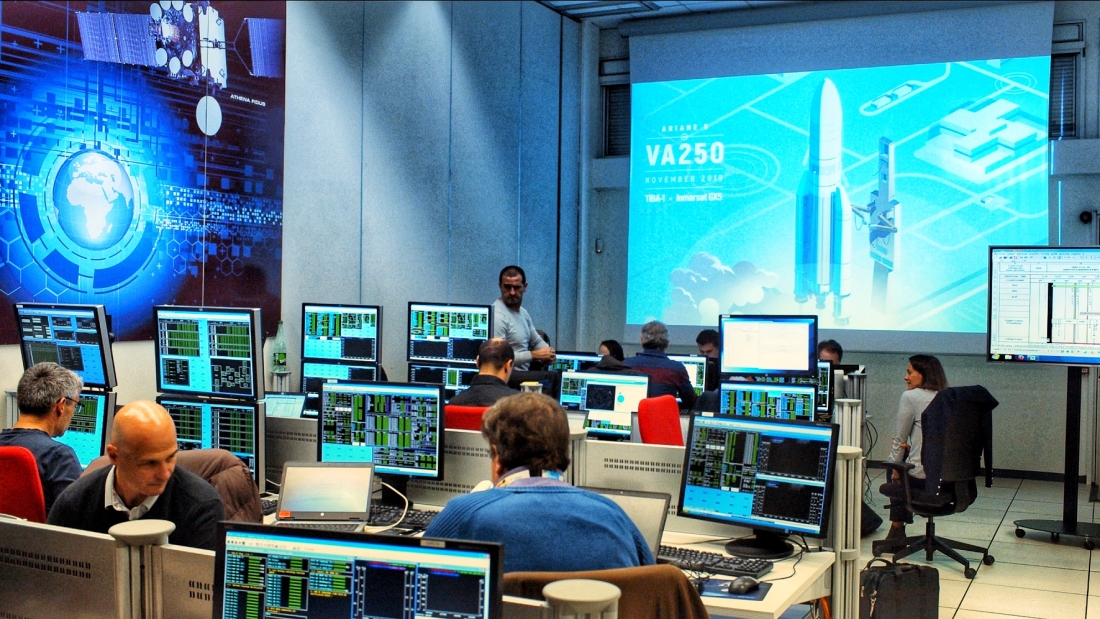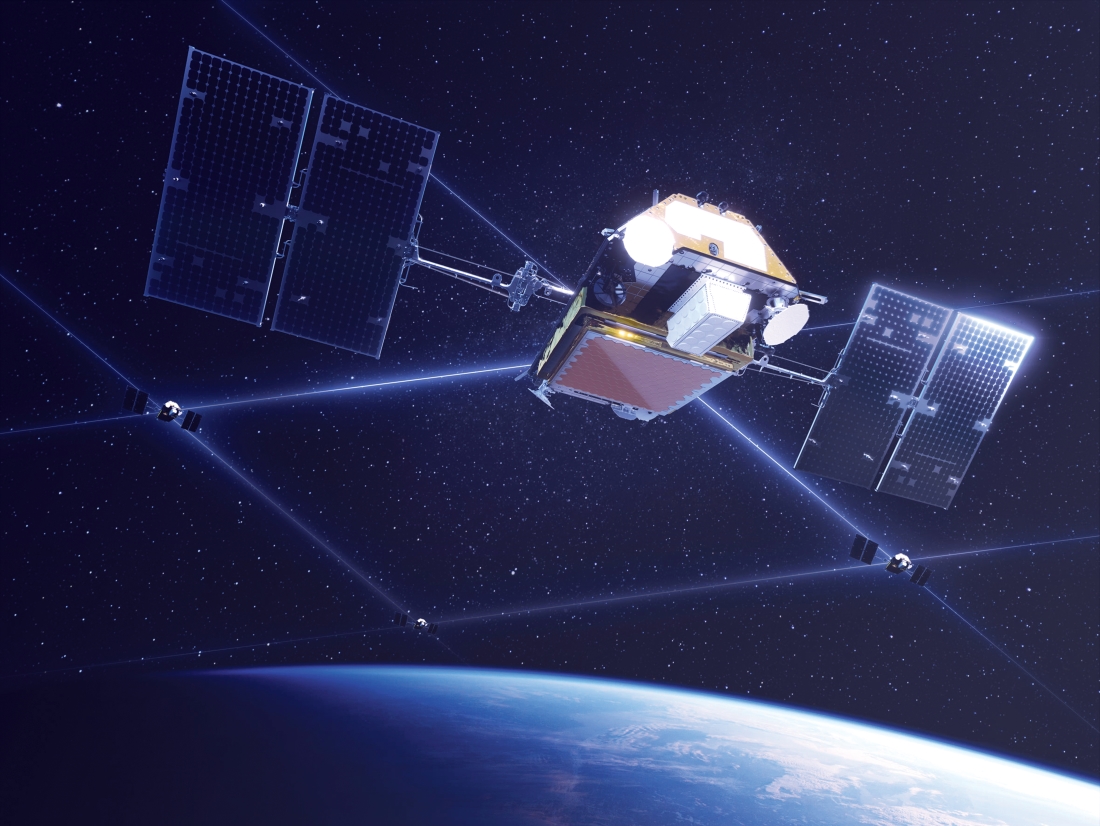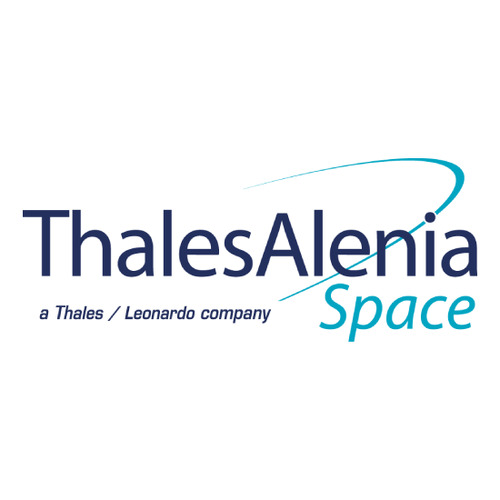Interview with Karim Chaouche, Head of Flight Operations Engineering
at Thales Alenia Space
According to several sources, the proportion of women pursuing scientific and technical studies in France is around 27%. Thales Alenia Space has 24.5% women on its staff, which is a high rate for the space sector. The company considers that greater gender diversity is a lever for innovation and performance.
In the space sector, however, we’re seeing a paradigm shift. The life of astronauts on long-duration missions on the International Space Station is fascinating for everyone, regardless of age or gender. Fantastic pictures of our planet, immortalized by astronauts from the famous Cupola observatory module and posted across social media only add to this sense of wonder. Flagship programs like Solar Orbiter, which will explore the Sun, the Cheops telescope, which is studying exoplanets, and ExoMars, which is searching for signs of past life on Mars, are helping bring space to public attention. Plus, if it wasn’t for satellites, how would we connect and interact with each other? How would we know what the weather will be doing in the next few days? And how would we navigate while driving in the middle of nowhere? The number of applications made possible by space technology is immeasurable. More than ever, space is part of our daily lives.
For several years now, Thales Alenia Space has been pursuing a proactive strategy to promote diversity and inclusion. Genuine equality is still some way off, but we’re making significant progress from one year to the next. As part of this year’s International Women’s Day on March 8, we wanted to get a male perspective, so we interviewed Karim Chaouche, who’s responsible for a team of 60 people, 40% of them women.
Could you tell us a bit about your role at Thales Alenia Space?

I’m Head of Flight Operations Engineering and related activities. I could sum up my role in three action verbs: Train, Perform and Support:
• Train our customers so they’re able to control a satellite or constellation after handover.
• Perform the flight phases for our customers, from launcher separation to final delivery.
• Support them throughout the service life of the satellite or constellation.
As flight operations manager, I supervise positioning activities for a geostationary telecommunications satellite or a constellation of satellites, from launcher separation to reaching final orbit. Specifically, I’m responsible for two departments: Launch and Early Operations, which I’ve just described, and In-Orbit Support, which provides in-orbit engineering support throughout the contractual duration of each mission. A geostationary telecom satellite can have a service life of over 15 years. Positioning a geostationary satellite with a chemical propulsion system typically takes about 10 days. If a satellite has electric propulsion, the operation can take several months.
Why is there a higher proportion of women engineers in your departments than in others?

First I’d say this isn’t just any job — what we do is really exciting. Controlling a satellite or a constellation via a radio link might seem like an adventure and a bit surreal. But actually, these operations require a complex infrastructure to raise a satellite from launcher separation at an altitude of a few hundred kilometers to its final geostationary orbit, which is 35,786 kilometers (22,236 miles) above the Earth. The infrastructure needed includes several large antennas from 9 to 13 meters in diameter (30 to over 40 feet) in locations around the world and complex control hardware and software that allows us to “talk” with the satellite. Having the chance to command a satellite remotely is quite rare, yet very tangible. For this reason, what we do is equally attractive to women and men. What’s more, in satellite positioning and in-orbit support operations, we work closely with our customers for the duration of each mission. Providing in-orbit support throughout the service life of a satellite or constellation calls for a high level of availability and rigorous attention to detail, as well as transparent communication with our customers. The way we respond to customers has always been to a consistently high standard, whether it’s female or male members of our teams. I’m lucky to be working with such solid and extremely professional teams.
Is it true your teams have rescued several satellites in the past?

[Laughs] Yes, on several occasions we’ve managed to rescue satellites injected into the wrong orbit and get them to their correct final orbit. One of them was the Russian Yamal-402 satellite. We also saved Palapa-D for an Indonesian customer. For Palapa-D, Thales Alenia Space was actually awarded a prize at a space insurers conference. In 2017, we saved another satellite, AMC-9 for SES Americom, after working on the problem for more than six months. The rescue was coordinated by the in-orbit support teams and was a real success. In our sphere of activity, it’s regarded as a textbook example of best practices, and SES and Thales Alenia Space gave a joint presentation about it at the 2018 SpaceOps Conference. Luckily, this type of situation is quite rare. Rescues apart, our work involves other extraordinary events.

The Iridium NEXT success story is a prime example. We were responsible for orbital positioning operations for the entire constellation of 75 satellites. Between early 2017 and early 2019, SpaceX orbited 75 Iridium NEXT satellites over eight launches. Positioning operations were performed from the Iridium Satellite Network Operations Center in Leesburg, Virginia. Replacing such a large constellation one satellite at a time — bearing in mind each satellite weighs around 850 kilograms at launch (approx. 1,870 lb) — was a major world first. There was no disruption to service at any point in the operation, and our customer, Iridium, was extremely pleased with the system architecture and the quality of our products.
What difference has gender equality and diversity made within your current organization?
I’ve noticed that the men and women in my teams have different approaches and ways of understanding and managing issues as they arise. Because they look at things differently, we’re able to find solutions much more quickly and easily. In my view, it’s never good for any one stereotype to be dominant in a team. As well as gender equality, the diversity of people joining our teams with different nationalities, backgrounds and experience in other countries helps us function better as an organization — especially in our business, where we’re iterating with customers around the world. After all, isn’t grey matter evenly distributed around the planet? I think diversity and inclusion helps create a healthy social balance and a really complementary fit of knowledge, know-how and vision, as well as a pleasant and friendly environment. It’s all positive!
Copyrights ©Thales Alenia Space/Marchioro - ©Thales Alenia Space/Serge-Henri - ©Thales Alenia Space/Master Image Programmes


